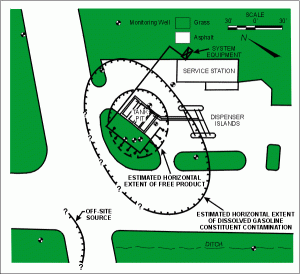Posted on December 17, 2021 by William L. Thomas

ASTM announced revisions to its standard practice for Phase I environmental site assessments (E1527-21) on November 1, 2021 (the “Standard”). They will take effect on January 1, 2022, with publication and adoption by the U.S. Environmental Protection Agency (“U.S. EPA”) anticipated in due course. Phase I environmental site assessments (“Phase I ESAs”) play an important part in real estate due diligence and can constitute “All Appropriate Inquiry” (“AAI”) under the liability protections afforded by the U.S. Comprehensive Environmental Response, Compensation, and Liability Act (“CERCLA”) and analogous state laws.
The current refresh of the Standard seeks to clarify language that had previously caused confusion since the Standard’s last update in 2013, as well as to enhance consistency in the preparation and language of reports and to improve their quality overall. Although more “evolutionary” than “revolutionary”, the changes merit attention as indicated by the examples provided below.
“Clearer” Definition(s)
Under the new Standard, some definitional terms, e.g., “Recognized Environmental Condition” (“REC”), “Controlled REC” (“CREC”), and “Historical REC” (“HREC”), have been sharpened, and new definitions have been added for terms such as “Likely”, “Property Use Limitation” (“PUL”), and “Significant Data Gap.” For example, the new definition of PUL as a “control” within the revised CREC definition appears to be a catchall covering the presence of hazardous substances or petroleum products at the subject property above an unrestricted use level where there are no site-specific legal or technical mechanisms (i.e., controls) reconcilable with CERCLA or EPA guidance as provided in 2019. This introduction of PUL may prove nettlesome where a CREC is identified by the environmental professional under the Standard, and yet controls may not be available.
Source and Substance
The new Standard places greater emphasis on the review of key historical sources when evaluating the uses of adjoining properties, including review of aerial photographs, topographic maps, fire insurance maps, and city directories. The revisions also bring consistency to the use of the term “Subject Property” and greater insight into how a significant data gap affects the environmental professional’s opinion.
Emerging Contaminants
The revised standard recognizes per-/polyfluoroalkyl substances (“PFAS”) and other, so-called “emerging contaminants” and references their evaluation as “non-scope considerations” or business risks, as none of the individual PFAS are defined as “hazardous substances” under CERCLA. Non-scope considerations such as asbestos containing materials, lead-based paint, radon, regulatory compliance and the like can be included in a Phase I ESA, but are not formally required. Should U.S. EPA move to characterize these contaminants as hazardous substances (as is currently under consideration), then they would be covered under the Standard. Since PFAS is listed, or is being actively considered for listing, as a regulated substance under certain state cleanup laws (e.g., Washington), it may warrant consideration in a report in order to obtain the limited liability protection afforded under such laws.
Looking Ahead
While the latest iteration of ASTM’s Phase I ESA standard is not expected to materially alter the “doing” of real estate due diligence, some of the seemingly minor revisions may ultimately prove important, and in some cases result in different findings than under the earlier version. These changes include an increase in the number of CRECs and a proportional decrease in the number of HRECs). The changes may also increase a report’s cost and preparation time, especially in urban areas. In addition, those seeking to rely on Phase I ESAs for liability protection under CERCLA and analogous state laws should note that the dates of completion for relevant parts of the assessment must be identified under the new standard so that users can recognize when updating key elements is necessary to demonstrate timely completion of AAI.
